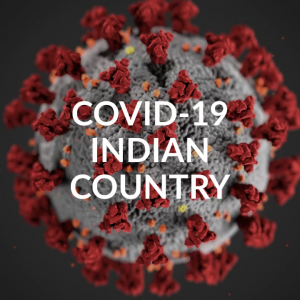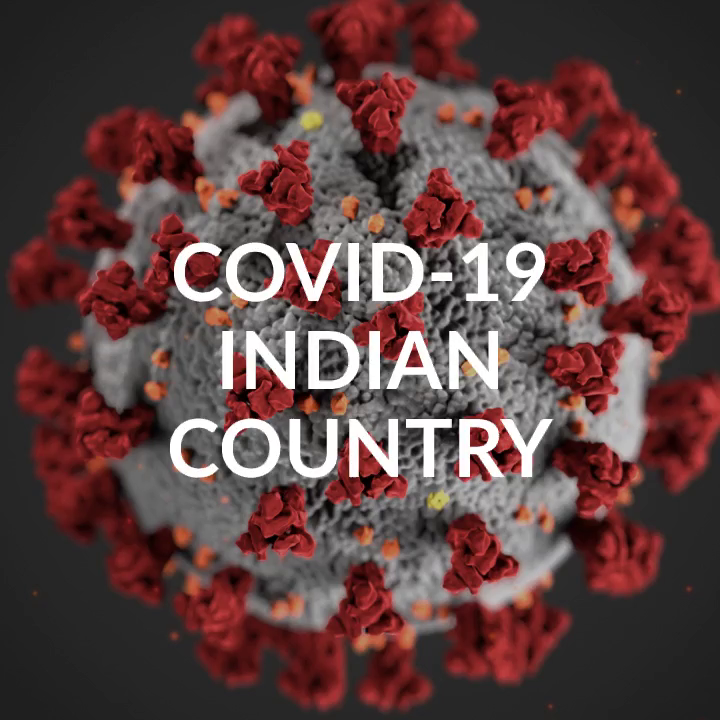
According to the data, 466,547 tests have returned positive for COVID-19, the disease caused by the coronavirus.
Altogether, 4,391,210 coronavirus tests have been administered within the IHS, the results show.
Since mid-October of 2020, the IHS has been providing additional information about the spread of the coronavirus within the system. The cumulative percent positive column shows the historical COVID-19 infection rate, meaning the number of tests that have returned positive since the onset of the pandemic.
Based on the cumulative percent positive, the highest rates have been seen in five of 12 IHS areas. Two of them include the state of Arizona, indicating a disproportionate toll of COVID-19 in the state:
- Navajo Area — 16.1 percent
- Oklahoma City Area — 15.2 percent
- Phoenix Area — 14.8 percent
- California Area — 11.8 percent
- Albuquerque Area — 10.8 percent
On January 19, the Oklahoma City Area overtook the Phoenix Area as the region with the second highest percentage of cumulative percent positive tests. But the two regions still have nearly the same positivity rate as of May 22.
The 7-day rolling average positivity column offers a more contemporary look at the impact of the coronavirus. The data shows where COVID-19 cases have been increasing recently in the 12 areas of the IHS.
- Nashville Area — 15.3 percent
- Bemidji Area — 13.7 percent
- Phoenix Area — 11.6 percent
- Portland Area — 11.2 percent
- California Area — 11.1 percent
- Navajo Area — 10.1 percent
- Billings Area — 8.2 percent
- Tucson Area — 6.8 percent
- Albuquerque Area — 6.3 percent
- Alaska Area — 6.1 percent
- Oklahoma City Area — 5.4 percent
- Great Plains Area — 3.8 percent
Overall, 11.3 percent of IHS tests have been positive since the onset of the pandemic, the data shows. Meanwhile, the 7-day positivity rate has been steadily rising in the last couple of weeks. It now stands at 8.3 percent, which is still lower than the extremely high rates seen after the 2021 Christmas holiday season.
The data, however, is incomplete. While 100 percent of facilities run directly by the IHS are reporting data, only 33 percent of tribally managed facilities and 44 percent of urban Indian organizations are doing the same, the agency has told Indianz.Com.
Beginning June 7, 2021, the IHS began updating its coronavirus data on a weekly basis. But as the number of COVID-19 cases grows again, the agency is updating results twice a week — usually on Mondays and Thursdays. Throughout 2020 and the first half of 2021, results were provided by the IHS every day.
COVID-19 Cases by IHS Area
Data are reported from IHS, tribal, and urban Indian organization facilities, though reporting by tribal and urban programs is voluntary. Data reflect cases reported to the IHS through 11:59 pm on May 22, 2022.
|
IHS Area
|
Tested
|
Positive
|
Negative
|
Cumulative
percent
positive
|
7-day rolling
average
positivity
|
|---|---|---|---|---|---|
| Alaska | 1,058,814 | 50,169 | 873,982 | 5.4% | 6.1% |
| Albuquerque | 146,724 | 13,656 | 112,422 | 10.8% | 6.3% |
| Bemidji | 300,490 | 29,415 | 270,079 | 9.8% | 13.7% |
| Billings | 152,472 | 13,270 | 134,726 | 9.0% | 8.2% |
| California | 176,331 | 19,880 | 148,881 | 11.8% | 11.1% |
| Great Plains | 248,943 | 25,688 | 221,139 | 10.4% | 3.8% |
| Nashville | 162,328 | 16,960 | 140,375 | 10.8% | 15.3% |
| Navajo | 488,174 | 67,920 | 352,906 | 16.1% | 10.1% |
| Oklahoma | 1,050,101 | 158,118 | 881,151 | 15.2% | 5.4% |
| Phoenix | 298,028 | 43,707 | 251,679 | 14.8% | 11.6% |
| Portland | 229,876 | 19,053 | 209,859 | 8.3% | 11.2% |
| Tucson | 78,929 | 8,711 | 69,948 | 11.1% | 6.8% |
| TOTAL | 4,391,210 | 466,547 | 3,667,147 | 11.3% | 8.3% |
COVID-19 testing data is updated on Mondays and Thursdays by 5 pm ET.
Source: Indian Health Service (https://www.ihs.gov/coronavirus)

